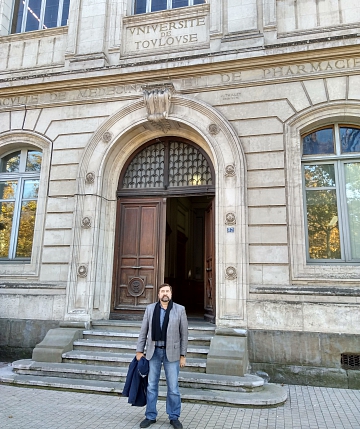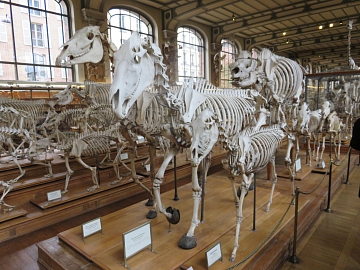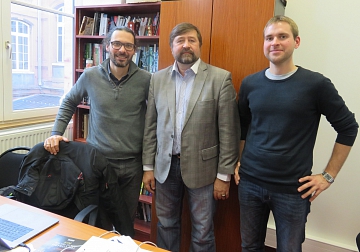ASU archaeologists foster cooperation with French colleagues
 In the second fortnight of November Head of the Department of Archeology, Ethnography and Museology, Doctor of History, Professor Alexey Tishkin made a long working trip related to the implementation of a major project funded by the Russian Science Foundation. The press center of the Faculty of History decided to ask him several questions about the trip.
In the second fortnight of November Head of the Department of Archeology, Ethnography and Museology, Doctor of History, Professor Alexey Tishkin made a long working trip related to the implementation of a major project funded by the Russian Science Foundation. The press center of the Faculty of History decided to ask him several questions about the trip.
– What events did you participate in and what scientific institutions did you visit during the trip?
– First, I visited a conference, which was held at the Institute of Archeology of the Russian Academy of Sciences and State Historical Museum in Moscow. There our archaeological work results were presented. Then, in St. Petersburg I participated in a series of events related to analytical work with various archaeological materials, including Chinese lacquer that was found in Altai. I also managed to visit several meetings at the State Hermitage Museum, the Roerich Family Museum and Institute, the Institute for History of Material Culture under the Russian Academy of Sciences, and the Zoological Institute under the Russian Academy of Sciences. There we discussed activities that had already been implemented and planned the new ones for the next year. The schedule was very tight, but we have completed everything.
– We know that you also visited France. Tell us about your trip to this country.
– My colleague, main performer of the project, Candidate of History Nikolai N. Seregin, and I left St. Petersburg for France, where it was necessary to strengthen cooperation with the Laboratory for Molecular Anthropology and Synthesis Visualization at the University of Toulouse III. Within the framework of our project, paleogenetic studies of ancient and medieval horses of Altai and adjacent territories are carried out. There is a large center for such kind of scientific works in Toulouse. At first we interacted with our Novosibirsk colleagues, but then it became clear that new methods, technologies and approaches are needed to solve modern problems. Now one of the young performers of our project undergoes training in Toulouse. She won a scholarship and will master everything connected with the genetics of ancient and modern horses within three years.


– Have any joint plans been developed for further cooperation with the university?
– Certainly. During the trip we met with the head of the laboratory, Professor Ludovic Orlando, and also negotiated on joint projects. The main areas of cooperation for the coming years have been developed, and this is very important.
– What else did you visit in Paris?
– In Paris we managed to work in a number of museums, including such significant places as National Museum of Natural History and Museum of Asian Art. However, there was little time. Therefore, it is necessary to plan another trip to France next year.